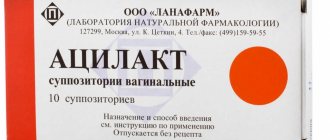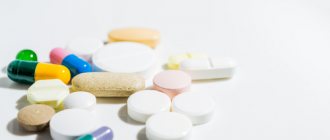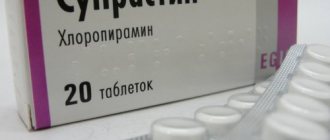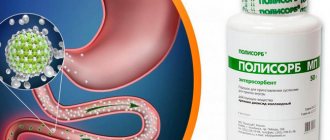Release form and composition
The drug is based on aminophenylbutyric acid (acidum aminophenylbutyricum in Latin). The following substances are used as auxiliary components:
- microcrystalline cellulose;
- calcium stearate;
- sodium starch glycolate;
- colloidal silicon dioxide.
Available in the form of flat-cylindrical tablets of white or cream color. Surface with chamfer and notch. One unit contains 250 mg of the main substance (phenibut). Packaged in cardboard packages of 1 or 2 blisters, respectively, 10 or 20 pieces. Blisters are equipped with contour cells. If necessary, you can purchase Phenibut in powder form. To do this, you need to leave an order at the pharmacy.
Literature:
- Pharmacology and clinic of phenibut / L. S. Mehilane, L. K. Ryago, L. H. Allikmets; Tart. univ. – Tartu: TU, 1990. – 147 p.
- Medicines in the neurological clinic: handbook. for doctors / E. I. Gusev, A. S. Nikiforov, A. B. Gekht. – 2nd ed., erased. – Moscow: MEDpress-inform, 2006 (M.: Printing house “News”). – 405 p.
- Pharmacodynamic and pharmacokinetic properties of drugs, GABA derivatives, developed at Volgograd State Medical University / Velikopolskaya M.V., Nikitina A.M., Suchkov E.A., Smirnova L.A. / 2016 / Volgograd scientific and medical journal
pharmachologic effect
The drug is a derivative of phenylethylamine and gamma-aminobutyric acid (GABA) of the phenyl type, due to which it reduces the level of tension, fear, anxiety, has an anxiolytic effect, and relieves insomnia. When taken simultaneously with sleeping pills, neuroleptics and narcotic drugs, the effect of the latter is enhanced.
What is Phenibut?
Phenibut is a nootropic psychostimulant that inhibits neurotransmitters of the central nervous system. The active substance has a crystalline structure and a sour taste. To make tablets, a white powdery mass is used, soluble in alcohol and water. pH values in an aqueous solution correspond to the norm of 2.3-2.7.
Pharmacodynamics
The nootropic affects the integrative higher functionality of the brain, stimulating mental activity, memory and other abilities. Increases brain stability under increased loads, stressful situations and hypoxia (oxygen starvation). Has the following effect on the body:
- Strengthens cortico-subcortical connections (elements connecting the cortex with the subcortical sections).
- Normalizes tissue metabolism, accelerates blood supply, which improves brain functionality.
- Reduces blood vessel resistance.
- Has antiplatelet properties.
- Has an anticonvulsant effect.
- Increases the latent period. This reduces nystagmus.
- Reduces asthenia, relieves vasovegetative symptoms.
- Reduces the excitability of subcortical elements, thalamus, hypothalamus, limbic complex.
- Accelerates the transmission of nerve impulses.
- Delays induced and spontaneous platelet aggregation, thereby preventing the development of thrombosis.
- Increases the number of mitochondria in the affected area during traumatic brain injury, where perifocal changes occur.
- Utilizes excess glucose.
- Launches energy processes.
- Improves tissue respiration.
Achieved effect:
- the accuracy of the sensory-motor reaction is stabilized;
- memory is restored;
- concentration improves;
- mental capacity increases;
- performance increases during the daytime;
- insomnia disappears at night;
- anxiety and restlessness are reduced;
- pain in the head and feeling of heaviness are relieved;
- irritability disappears (sedative effect);
- emotional lability increases;
- clarity of consciousness appears.
The drug does not have a negative effect on adrenergic and cholinergic receptors, does not depress the central nervous system, does not relax muscles, and therefore can be used even in old age. Positive dynamics are observed after long-term use, as the effect develops gradually.
Pharmacokinetics
After penetration into the body, the active substance is quickly absorbed, evenly distributed throughout the tissues (0.1% is concentrated in the brain), and the younger the patient, the higher these indicators. Easily overcomes the BBB (blood-brain barrier between the central nervous and circulatory systems). Metabolization in the liver ranges from 80 to 95 percent, metabolites are not activated.
Cumulation does not occur, the active substance is excreted by 5% through the kidneys in an unchanged state, some of it is excreted through bile. The onset of elimination is noted after 3 hours, but the substance acts in the brain for 6 hours.
Action
Phenibut increases brain activity as well as mental performance. After taking the drug, children’s feelings of anxiety and fear disappear, memory improves, and concentration increases. Pediatricians often note the fact that children’s speech defects, stuttering, and tics disappear. Among other things, Phenibut for children has a hypnotic property, due to which the child’s sleep is normalized, nightmares and insomnia disappear.
Generally speaking, after taking a course of Phenibut, children experience:
- Relief from nervous tension.
- Normalization and improvement of sleep.
- Getting rid of panic attacks, feelings of restlessness and anxiety.
- Increasing blood flow speed.
- Decreased vascular tone of the brain.
- Improved blood circulation.
- Relief from cramps.
- Normalization of tissue metabolism.
- Elimination of speech defects, including stuttering.
- Elimination of problems with urination.
Indications for use of Phenibut
Phenibut is prescribed in such cases as:
- decreased brain activity;
- fear, anxiety, causeless worry;
- the presence of nightmares;
- poor concentration and memory;
- lack of emotional activity;
- asthenic syndrome;
- insomnia (dyssomnia);
- somatovegetative disorder;
- psychopathic disorders;
- Meniere's syndrome;
- alcohol dependence and withdrawal;
- obsessive-compulsive neurosis;
- osteochondrosis of the cervical and thoracic spine;
- kinetosis (a movement disorder in which the patient feels motion sick);
- dizziness due to vestibular dysfunction (due to infection of the body, injuries, pathologies of the circulatory system);
- climacteric disorder;
- urinary incontinence in a child;
- childhood stuttering;
- pathological hyperactivity of the baby;
- nervous tic.
The drug is prescribed after alcohol intoxication and withdrawal from alcohol-containing drinks, especially with delirious syndrome (disorientation, clouding of consciousness, illusory hallucinations). Along with Phenibut, the patient takes detoxification medications. Quite often, the drug is used before surgery to prevent stress.
What is it prescribed for?
Phenibut for children is used to treat children aged 2 years, 3 years or 5 years in the following cases:
- neurotic conditions;
- DSVG;
- stuttering;
- logoneurosis;
- panic attacks;
- convulsions;
- ZRR;
- feeling of anxiety;
- sleep disorders;
- hyperactivity;
- psychopathy;
- enuresis (urinary incontinence) and urinary retention;
- increased fatigue, as well as chronic fatigue syndrome;
- obsessive states;
- motion sickness on the road;
- nervous tics;
- autism.
Phenibut dosage
The drug Phenibut is taken orally (inside) in courses, depending on the indications, individual characteristics of the body, concomitant diseases and compatibility with other dosage forms. On average it is 30-45 days. The daily dosage, divided into 3 doses, for an adult varies from 0.75 grams to 1.5. In some cases, the doctor allows you to increase the norm to 2.5 g. In old age (after 60 years), the maximum dose is 0.5 grams of the active substance per dose.
Instructions for use depending on the type of pathological abnormalities:
- For dizziness and Meniere's syndrome, a special scheme is used. In case of exacerbation of symptoms, three doses of 0.75 grams are prescribed (duration 5-7 days). After the level of symptoms has decreased, the dose is reduced to at least 0.25 g (duration is 7 days). In the final five days, the drug is taken 0.25 grams once a day.
- For mild diseases, Phenibut is prescribed in a daily dosage of 0.5 grams, divided into 2 doses. The duration of therapy is a minimum of 5 days, a maximum of a week. Next, the patient takes 0.25 grams of tablets once a day for 7-20 days.
- For pathologies of the circulatory system and after traumatic brain injuries, the drug is prescribed 1 tablet three times a day for 2 weeks.
- For osteochondrosis of the thoracic or cervical spine, as well as menopausal syndrome, you need to take 1 tablet (0.25 grams) 3 times a day for 2 weeks. After this, the dosage is reduced to twice taking 1 tablet. The general course of treatment is a month, but with pronounced symptoms, the duration of treatment increases.
- In case of alcohol withdrawal syndrome, an increased dose of the drug is required. The patient takes 1-2 tablets three times a day, and another 3 units before bedtime. After several days of treatment, the dosage is gradually reduced. As a result, it should be equal to 3 tablets per day.
- For preventive measures (before surgery, sailing, etc.), it is recommended to take 1-2 tablets 60 minutes before the expected event.
- If the patient shows signs of seasickness, Phenibut is combined with other medications.
- The drug is taken after meals. If a dose was missed, the course and dosage are not changed, but continue to take the tablets in accordance with the prescribed dose.
Contraindications
Based on the manufacturer's instructions, Phenibut has a small list of contraindications. Admission is strictly prohibited in the following cases:
- hypersensitivity of the body to the active or excipient substance, against which an allergic reaction occurs;
- pregnancy period;
- breast-feeding;
- age category up to 2 years;
- renal failure in the acute phase.
Relative prohibitions (use with caution):
- erosions and ulcers in the gastrointestinal tract;
- liver failure;
- age from 2 to 8 years.
If there are relative contraindications, an individual (lower) dosage is prescribed. If the drug has a negative effect, it is replaced with a similar one.
Side effects
The drug causes a relatively minor number of side effects. Most often they occur in the presence of contraindications or in the early stages of a therapeutic intervention. What may be accompanied by taking Phenibut:
- nausea;
- increased drowsiness;
- headache;
- increased blood pressure;
- excessive excitability;
- dizziness;
- increased anxiety, restlessness;
- irritability.
If an allergic reaction occurs, the patient experiences swelling, hyperemia of the skin (redness), rashes, itching, burning and other allergic manifestations.
Overdose
Exceeding the dose prescribed by the doctor also leads to the development of adverse reactions, which are especially severe. In addition, the following conditions may occur:
- a sharp drop in blood pressure;
- fainting;
- nausea and vomiting;
- renal failure;
- eosinophilia;
- hepatic fatty degeneration;
- kidney dysfunction.
In case of overdose, first aid must be provided. To do this, gastric lavage is performed:
- prepare table water in the amount of a liter;
- give the patient a drink in one gulp;
- cause a gag reflex;
- wait a few minutes, then repeat the procedure 2-3 more times.
Flushing is carried out immediately after dosing or the appearance of the first unpleasant symptoms. Next, you need to take absorbents - activated carbon. Toxins and the active substance are absorbed into the drug, then everything is excreted through feces.
Phenibut does not have an antidote. The drug has a low-level toxic compound, so the hepatotoxic effect occurs mainly after long-term use of excessive dosages. This leads to an increase in the concentration of eosinophils in the blood fluid of peripheral vessels. In addition, large amounts of triglycerides accumulate in the liver. It is these factors that contribute to the development of the above diseases.
Content:
- Medicinal properties of phenibut
- Narcotic properties of the drug
- When does drug addiction occur and how does it manifest itself?
- When does withdrawal develop and how does it manifest itself?
- How to treat
One of the substances that is used for narcotic effects is phenibut .
It belongs to nootropic drugs with anxiolytic (tranquilizer) activity. It was developed in the 60s of the last century in the USSR. The drug causes narcotic intoxication if taken for a long time or in large doses. Persons seeking to get a “high” are aware of this pattern. The intoxicating effect is pronounced and leads to disastrous consequences - drug addiction and severe withdrawal symptoms (o syndrome).
Interaction
To apply the method of mutual potentiation, Phenibut is combined with other psychotropic drugs. To do this, the dosage of all drugs that are taken at the same time is reduced. Phenibut interacts well with antiparkinsonian medications, antiepileptic groups, anticonvulsants and antipsychotic drugs. Can be used along with sleeping pills and narcotic analgesics. This approach makes it possible to enhance the degree of impact of different groups of drugs, increasing the duration of action.
Compatibility of Phenibut and Phenazepam
Both drugs easily interact with each other, as they are psychotropic. Unlike Phenibut, Phenazepam is based on bromodihydrochlorophenylbenzodiazepine. In simple terms, the drug belongs to another group of psychotropics - benzodiazeline, and therefore affects the muscular and central nervous system. When they are compatible, the effectiveness of both drugs increases. It is allowed to take together and sequentially. The introduction of one of the drugs into the course of treatment is carried out gradually.
Compatibility of Phenibut and Mexidol
These are completely different drugs. Phenibut helps stimulate cognitive abilities, improve memory and brain functionality. Additionally, it has a sedative effect. Mexidol is an antioxidant that reduces the concentration of free radicals that destroy brain cells. It is used for alcohol poisoning, stress, convulsions, and nervous excitement. Therefore, both remedies are aimed at calming the nervous system. By affecting the brain differently, they enhance each other's effects. This can lead to increased lethargy and drowsiness, so during treatment it is not recommended to drive or operate a machine (due to slower reactions).
Compatibility of Phenibut and Atarax
Atarax and Phenibut belong to the anti-anxiety group, but affect the nervous system differently. The first drug eliminates alcohol syndrome, nervous overexcitation, and irritability. The second remedy fights insomnia, improves mental activity, and has a psychostimulating effect. Combining these medications gives powerful positive dynamics, so they can be prescribed simultaneously.
Compatibility of Phenibut and Fluoxetine
Fluoxetine is intended to suppress depression. The mechanism is based on an increase in the amount of serotonin in parts of the brain. This substance is responsible for a person’s mood and mental state. Phenibut is not an antidepressant, but has a calming effect on the brain, stabilizing the emotional background. Fluoxetine often causes side effects such as dizziness, insomnia, and irritability. To prevent their manifestation, Phenibut is prescribed. In addition, the nootropic enhances the effect of the antidepressant. The peculiarity is that when used together, the dosage is not reduced.
Compatibility of Phenibut and Glycine
Glycine contains an active ingredient - the amino acid glycine, which has the most gentle effect on the body. Due to this, it is often prescribed in childhood. Glycine is produced by the human body, is responsible for activating processes in the nervous system, and is a neurotransmitter. Aminophenylbutyric acid from Phenibut interacts well with glycine - the effect of the 2 drugs is enhanced. There are no adverse reactions.
Phenibut analogs
There are absolute and similar analogues of drugs. In the first case, these are drugs with the same active ingredient, in the second - drugs with the same pharmacological effect. Phenibut has many different analogues, which will be discussed further.
Which is better Phenibut or Anvifen?
Anvifen is an absolutely similar nootropic drug in relation to Phenibut, but is produced not in tablet form, but in the form of capsules (25, 50, 125, 250 mg). It is pointless to talk about which drug is better and which is worse, since they have the same effect. However, it is worth considering the pros and cons of each medication.
Phenibut:
- Pros:
● low cost; ● possible to use from 2 years of age; ● fewer contraindications than Anfiven. - Cons:
● uncomfortable to swallow; ● produced in a single dosage: ● has a negative effect on the gastrointestinal tract.
Anvifen:
- Advantages:
● reduced negative impact on the gastrointestinal tract; ● ease of swallowing capsules; ● wide choice of dosage. - Disadvantages:
● more contraindications; ● high cost; ● can only be used from 3 years of age.
One more negative factor can be noted for both drugs - the impossibility of dividing the tablets/capsules according to the exact dose. Tablets cannot always be broken/cut perfectly straight, and capsules cannot be separated.
Which is better - Phenibut or Noofen?
Noofen is also an absolute analogue, as it contains aminophenylbutyric acid. In order to determine which is better, you need to study their differences:
- Unlike Phenibut, Noofen is produced in the form of tablets, capsules, and powder. And mainly in Latvia. Phenibut is produced in 3 countries - Latvia, Russia, Belarus.
- The supporting cast varies. Noofen contains lactose, potato starch.
- Noofen is used from birth.
- Phenibut has more side effects.
- Noofen is considered more expensive in contrast to Phenibut. Its price is at least 900 rubles for 20 units. Our drug can be bought for 50-500 rubles for the same quantity (the price depends on the country of origin).
Which is better - Phenibut or Afobazole?
Afobazole refers to a nootropic drug that is based on the active ingredient febomotizole. Additionally prescribed for diseases of the cardiovascular system - heart attacks, coronary heart diseases. And also for cancer, asthma, systemic lupus erythematosus. The pharmacological action is the same, but Afobazole does not accelerate cerebral circulation, but has a slightly milder effect. Other features:
- Phenibut. The cost is slightly lower, the anti-anxiety effect is higher. There are more adverse reactions.
- Afobazol. The price is 2 times higher, but it is more easily tolerated by patients. Among the contraindications, it is worth noting lactase intolerance.
Thus, if a person has poor blood circulation, there is no deficiency of lactase enzymes, and also needs to achieve high anti-anxiety effectiveness, then it is better to purchase Phenibut.
Which is better - Phenibut or Grandaxin?
Grandaxin belongs to the group of benzodiazepine-based tranquilizers. The drug is used for alcohol and drug withdrawal, moderate depression, anxiety and nervous system disorders. It is distinguished by the absence of a sedative effect, therefore, on the contrary, it invigorates and excites, which means that the anti-anxiety effect is achieved slowly. In addition, the drug has a large list of adverse reactions and contraindications (additionally - atherosclerosis, respiratory failure, epilepsy, impaired blood supply to the brain).
Which is better - Phenibut or Pantogam?
Pantogam and Phenibut have the same mechanism of action, as they belong to the group of nootropic drugs, but the indications for use differ slightly. Pantogam is recommended for decreased performance, schizophrenia, senile dementia, and impaired urination. But there are also general indications: traumatic brain injuries, circulatory disorders in the brain, pathologies of the circulatory system. It also has a calming effect, but very weakly. It is impossible to completely get rid of anxiety, so preference should be given to Phenibut. The cost of Pantogam is much higher. The instructions for use contain a small list of adverse reactions; the drug can be taken from early childhood (in the form of syrup), so Pantogam is recommended for children.
Which is better - Phenibut or Adaptol?
Adaptol is a daytime tranquilizer, as it does not promote sleep. The composition contains the active substance tetramethyltetraazabecyclooctanedione, that is, mebicar, and therefore has cerebroprotective and antioxidant properties. Phenibut and Adaptol are similar in some general indications, but there are still differences:
- Phenibut is a nootropic, Adaptol is an anxiolytic, so they affect the body differently.
- The first drug has a wider spectrum of action (anxiety, insomnia, consequences of trauma, impaired concentration and memory, urinary incontinence, stuttering, tickpsychopathy, somovegetative disorders), the second - only ischemic heart pain, neurosis, alcohol and nicotine addiction.
- Phenibut is produced in 3 countries, so you can buy tablets from a budget option.
- Adaptol has a smaller list of side effects, but Phenibut has a stronger and faster effect.
Which is better - Phenibut or Teraligen?
If Phenibut belongs to the nootropic group, then Teraligen belongs to the neuroleptic group, therefore it is used for mental diseases, allergies, vomiting, etc. Both drugs have a common effect: they eliminate nervous tension and relieve muscle spasms. Stabilizes sleep, neutralizes anxiety and calms. Differences:
- Phenibut is a nootropic and at the same time an anxiolytic, while Teraligen is an antihistamine and an antipsychotypic drug, and therefore has a narrower range of applications.
- Teraligen has a more powerful anti-anxiety effect (which is why it is used for chronic depression), but Phenibut has a milder effect.
- The first drug has more contraindications and side effects.
Which is better - Phenibut or Tenoten?
Both drugs belong to the group of nootropics and anti-anxiety drugs, but their mechanism of action is different. Tenoten is based on antibodies to the brain-specific protein S-100, therefore it accelerates metabolism and increases energy reserves in brain neurons. Antibodies, when combined with proteins, change their properties, which improves the transmission of nerve impulses. This leads to increased resistance of the nervous system to hypoxia (oxygen starvation does not occur). This is especially important for affected areas.
The peculiarity of the drug is its ability to have both a sedative and stimulating effect, depending on the pathological abnormality. Thus, Tenoten is used for increased excitability and irritability, and Phenibut for fears, nervousness, and anxiety. It is impossible to say unequivocally which medication is better, since their prescription is based on the causes of pathologies, accompanying symptoms and features of the course of the disease.
What is better - Phenibut or Phenotropil?
Phenotropil is a nootropic drug with the active ingredient of the same name. The action is aimed at improving concentration and attention, memory, increasing energy reserves, like Phenibut, so the drugs improve the functionality of the brain. However, Phenotropil does not provide a sedative effect, does not fight insomnia, but, on the contrary, leads to excitability and activation. Consequently, the indications for the products are slightly different:
- Phenibut: tic, seizures, insomnia, anxiety, etc.
- Phenotropil: neurosis in which psychomotor activity is impaired, prolonged depression, convulsions, diseases of the circulatory system.
Based on the above, Phenibut and Phenotropil have one thing in common - improving brain activity. When prescribing, the doctor is guided by the cause of the patient’s condition.
Reviews
Feedback from parents after using Phenibut is mostly positive. Some note that after treatment the child became less irritable, hyperactivity and excitability disappeared. Others note that Phenibut normalized sleep in children and eliminated nightmares. Let's look at some reviews from parents below.
Veronica August 21, 2021
“My son is 6 years old. From birth he was a difficult child, restless. It was simply impossible to get him to sit down! No matter what doctors we went to, they all prescribed us only glycine and herbal decoctions. Things got more complicated when my son went to school. I thought that in the company of other children he would become calmer and more reserved, but I was wrong. Conflicts with classmates began on the second day of school. Then I took my son to a neurologist. We were prescribed Phenibut.
At first I was scared, because this is a powerful drug! But the doctor reassured me and explained that it is absolutely harmless to the child. At first it was difficult, side effects made themselves felt: nausea, dizziness, headache. However, after just a week of taking it, I noticed results! The child became calmer, conflicts at school and within the family disappeared. According to my son, his nightmares even disappeared after Phenibut.”
Anna November 16, 2021
“I have two children - 7 months and 10 years old. A month after the birth of the youngest, the eldest daughter began to complain of lack of sleep and nightmares. At first, I thought that the baby was not letting her sleep, waking her up at night. But even when the youngest slept peacefully, the daughter complained of being unwell. After this, constant fatigue was added, which developed into chronic fatigue. Afterwards she began to complain of feelings of anxiety and restlessness.
I took my daughter to the pediatrician, from where we were redirected to a neurologist. After listening to us, the doctor gave a prescription for Phenibut. After completing the course in two weeks, my daughter seemed to have been replaced! The fatigue disappeared, the child began to sleep at night again! Now we know what to do if the same problem happens to the youngest.”
Natalya April 4, 2021
“My son is 15 years old. Not long ago he began to complain to me about depression, a persistent feeling of anxiety and fear. At first I didn’t pay attention, I thought the teenage thing would pass. I even gave him valerian at first. But the result was only temporary. The child walked gloomy and depressed all the time, and then began to complain of nightmares. A month later I took him to a neurologist.
The diagnosis is sleep disturbance and obsessive-compulsive disorder, complicated by panic attacks. Phenibut was prescribed. At first, the son resisted, did not want to take the pills, and said that he was not crazy. Teenagers, what to take from them. But after 10 days of the course, when the first side effects passed, the child felt noticeable improvements. I started sleeping more and can’t get up at night. Teenage irritability has disappeared. The child became calmer and more reserved. A couple of days ago he said that panic attacks and depression had passed. This is simply wonderful news!”
Olga July 11, 2021
“The four-year-old daughter suffered from enuresis. My daughter was already very worried about this, and they started teasing her in kindergarten. I persuaded my daughter to go to the doctor. Phenibut therapy was prescribed. At first, it was scary to give such a potent drug to a child, I was afraid of making a mistake in the dosage. After three weeks of treatment, we forgot that we ever had such a problem! The daughter lives an ordinary life, does not have complexes for any reason, and is no longer teased in kindergarten. Thanks to the neurologist.”
Phenibut for children
Phenibut has a low level of toxicity and a mild effect, therefore it is prescribed to children starting at the age of 8 years. However, there are exceptions when the drug is taken from 2 years of age. In this case, it is necessary to purchase not the tablet form, but the powder form, which is prepared by pharmacists directly in the formulation department of any pharmacy. This is convenient because the drug can be given in any low dosage. Based on the instructions for use, from 8 to 14 years old the recommended daily dose is 0.75 grams, divided into 3 doses. In particularly difficult situations, the norm may be increased to 100 mg.
Indications for children:
- nervous tic;
- stuttering;
- urinary incontinence;
- neurosis, anxiety disorders.
To achieve positive dynamics during therapy, it is recommended to additionally take other groups of drugs and use special techniques, since Phenibut enhances the effect of other drugs.
In childhood, long-term use (more than a month) is prohibited, because it is possible to develop psychological dependence on the tablets (powder). It is not advisable to give the drug to newborns and children under 2 years of age. This is due to the fact that the active substance has a multidirectional effect, so the body’s reaction can be negative.
Phenibut addiction
With prolonged, uncontrolled use of phenibut, mental and physical dependence may develop. This may require special treatment from a psychiatrist-narcologist and subsequent rehabilitation. As a rule, cases of dependence on phenibut were observed in persons dependent on psychoactive substances who had a long history of drug addiction and who switched from using the drug to phenibut. The development of primary dependence on phenibut only after long-term use is extremely rare.
Compatibility of Phenibut and alcohol
The drug is prescribed by narcologists to eliminate symptoms in the following cases:
- alcohol addiction;
- preliminary state;
- delirium;
- alcohol withdrawal.
Based on this, many people mistakenly believe that Phenibut is compatible with alcohol-containing drinks (there are no direct indications of a prohibition in the instructions of the certified drug). This is fundamentally not true, because the active substance acts as follows:
- The drug has a sedative effect, so when drinking alcohol, intoxication increases many times and has a pathological form. Against this background, powerful intoxication of the body occurs and instant addiction to the drug occurs, which is fraught with subsequent addiction (many alcohol addicts like the quick effect of intoxication).
- Aminophenylbutyric acid and alcohol are similar in their mechanism of action on metabolism, so competition arises between them. To put it simply, ethanol and the active substance of the drug seem to compete with each other, suppressing and changing each other’s effects. As a result, the desired effect is not achieved, but side reactions occur, which is fraught with life-threatening complications.
Prescription of the drug during pregnancy
The nootropic Phenibut is prohibited for use during pregnancy and lactation. This is especially true in the first trimester, when the fetus is just beginning to form. During this period, the main systems and organs are formed. Due to the fact that no studies have yet been conducted on the effect of GABA derivatives on the embryo, the medication is not prescribed until 3 months of pregnancy.
In the 2nd and 3rd trimester, Phenibut can be prescribed, but only in a situation where the likely benefit outweighs the potential harm to the unborn baby. In this case, the dosage and duration of the course are determined primarily by the attending doctor. In this case, medical supervision is required.
During breastfeeding, the drug is prescribed with great caution, since there is no official data on the penetration of the active substance into breast milk. If the intake is recommended by another specialist, then you will have to give up lactation and transfer the baby to artificial feeding.
When does withdrawal develop and how does it manifest itself?
Quite early, the risk of developing withdrawal syndrome appears - if a person has been using this drug for about a month and a half and then reduced its dose or completely stopped taking it. Withdrawal progresses quickly.
This is due to the rapid loss of tolerance (sensitivity) to phenibut. This state of affairs means that the body needs this substance, but a small amount does not satisfy it, and taking large amounts leads to an even greater increase in tolerance. There is a snowball effect - the more and longer you take the drug, the greater the dependence on it, which is even more difficult to get rid of.
The body requires a dose of the “potion”, but since it does not arrive, it signals its needs with symptoms such as:
- sudden changes in blood pressure;
- chills - the patient freezes even in comfortable temperature conditions, while complaining that he is “shaking”;
- unexplained drowsiness;
- accelerated heartbeat;
- general severe weakness;
- increasing anxiety and tension;
- progressive deterioration of well-being - the drug addict complains that he feels bad in general;
- depression;
- feeling of hopelessness;
- difficulty performing mental work;
- indifference, but with possible aggressive attacks towards others.
It seems to a drug addict that something irreparable and critical is about to happen; he cannot find a place for himself.
Please note: Withdrawal from someone who is “hooked” on phenibut is dangerous because the addict can make a suicide attempt.
Manufacturer
Phenibut is produced in 3 countries by the following pharmaceutical companies:
- Russia: Ozon LLC, Organika OJSC, Moscow Endocrine Federal State Unitary Enterprise, Usolye-Sibirsky Chemical Physics Complex.
- Latvia: JSC "Olainfarm" (Olainfarm).
- Belarus: Belmedpreparaty.
The prescription of the drug Phenibut is carried out by the treating specialist after a comprehensive examination of the patient. Only the doctor determines the dosage and duration of the course based on the results of diagnostic measures. During the therapeutic course, the patient's condition is monitored. Self-medication is strictly prohibited, as life-threatening consequences may occur.







